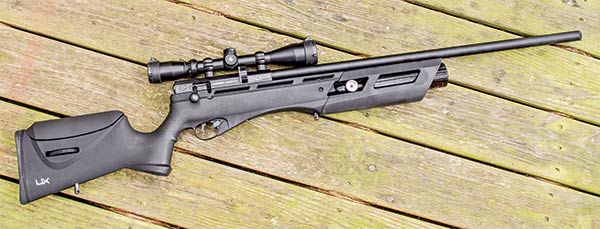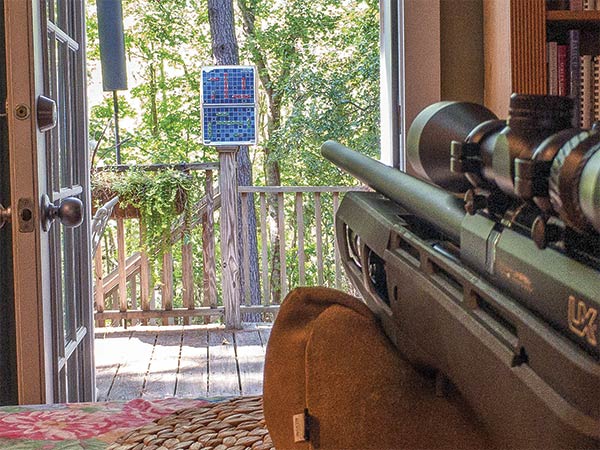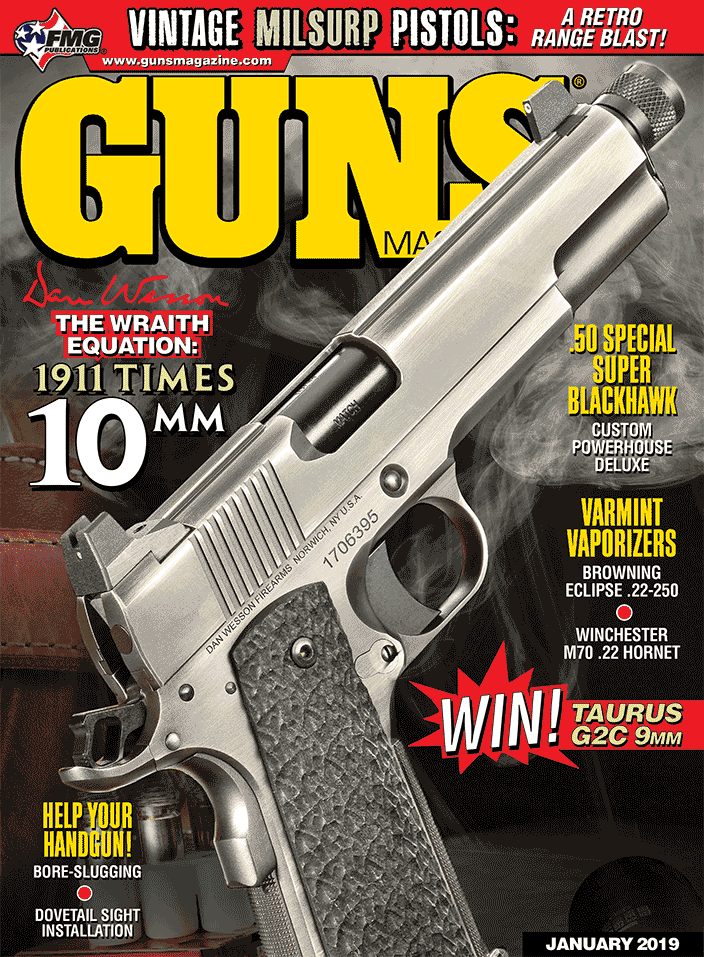Short And Serious
How to tune your skills within limited range space
I spent 25 years in captivity. No, not in North Vietnam or North Korea, but in a desperate day-to-day fight for survival in the pit of weekday despair known as “Corporate America.” Back then there was a popular strategy called “downsizing.” Smart companies — and I say this with extreme sarcasm — tended to “succeed” through an annual regimen of layoffs to save money and meet fiscal objectives.
I always wondered at what point they would be reduced to selling the furniture, but that’s another story. Fortunately, businesses have evolved and now talk about “rightsizing.” I think those corporate ladder-climbing pukes are finally on to something, because “rightsizing” is a concept that will help make you a better shooter — right in your own backyard.
If you can shoot accurately at short range, you can shoot just as well at long range. Sure, you’ll have to account for bullet drop, wind, and — if you’re really stretching things out, Coriolis effect and spindrift, but that’s just predictive math. Master sight picture, breath control, hold, and follow-through and you can shoot anything once you learn the math to predict bullet flight through multiple zip codes.
“I’ve got an air-conditioned setup that starts on the kitchen island, passes through the dining room and den, and ends at a target box full of old books under my bedroom nightstand.”
All Things Being Equal
The primary reason short-range shooting is relevant to longer ranges is the bedrock concept of proportionality. While topics like minute of angle and milliradians sound as complicated as weaponized algebra, they represent a proportional relationship between distance and bullet behavior. If a rifle shoots to an accurate standard of 1 MOA, then its group will fall into a 1.04″ circle at 100 yards. The proportionality concept means it will shoot into a 2.08″ circle at double the distance (200 yards) and so on.
Guess what? Proportions work both ways. If you shoot an airgun with 1 MOA accuracy, it will create a 0.104″ group at 10 yards. If you can shoot a group equal to the MOA accuracy of your rifle at 10 yards, you can also do it at 100. Even if you live under the iron-fisted rule of a neighborhood association, you can set up a functional and productive air rifle range in your backyard. Or garage. Or — if your spouse isn’t home — your bedroom hallway. Just between us (at least until my wife reads this), I’ve got an air-conditioned setup that starts on the kitchen island, passes through the dining room and den, and ends at a target box full of old books under my bedroom nightstand. That’s 15 yards. And it’s all indoors.
My rifle of choice for this indoor range is a .177 Umarex Gauntlet. The rifle is a pre-charged pneumatic that packs a truckload of advanced features into a relatively inexpensive package. The air reservoir is regulated, so every shot has consistent velocity. As we know, that drives repeatable accuracy. The Gauntlet also gives you about 90 shots from its replaceable air reservoir, so you rack up a lot of practice time before worrying about topping off with fresh air. While a high-powered .177 air rifle is no toy, those 8.3-gr. pellets aren’t going to be penetrating the walls of your home and the neighbor’s car even though they’re zinging along at 907.7 fps. Sounds to me like the perfect equipment for an at-home range, even in suburbia.
Ten Yard Champ
I did some accuracy testing with the Gauntlet from 10 yards. Groups averaged 0.213″ for five shots. That’s 2.2 MOA — not bad for a $299 MSRP airgun. Since there was no wind to skew groups, I now had a starting benchmark so I could focus on developing my core skills and measuring success over time. The best part is I can shoot whenever I want. No range visits. No police showing up at my door wondering what all the noise is about. And, most importantly for my continued marital bliss, no holes in the walls. Oh, and it only scares the dog a little.
If you want to get fancy and start calling wind to develop your breeze estimation skills, that works in your backyard too. Let’s consider an example using a 25-yard backyard range. With the same 8.3-gr., .177 RWS Superdome pellet and Umarex Gauntlet shown here, your pellets will drift 2″ in a 10 mph crosswind. Want some practice calling wind? You don’t need 1,000 yards to do that.
Here’s the kicker. Mastering air rifles will actually make you a better centerfire shooter. “Huh?” you say? “They’re just toys and can barely perforate wet Charmin!” Well, that’s not true anymore, but we’ll save the power factor for another day. Airguns, especially the spring and pneumatic piston variety, are absolutely unforgiving if you execute poor follow-through technique. Slower muzzle velocity and moving parts require perfect form for optimal results.
See the similarities to longer range shooting with bigger, faster and louder bullets? All the same concepts apply.
Airguns are just “rightsized” for at-home use.







